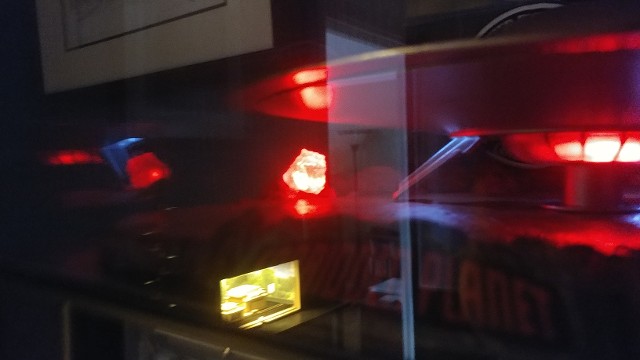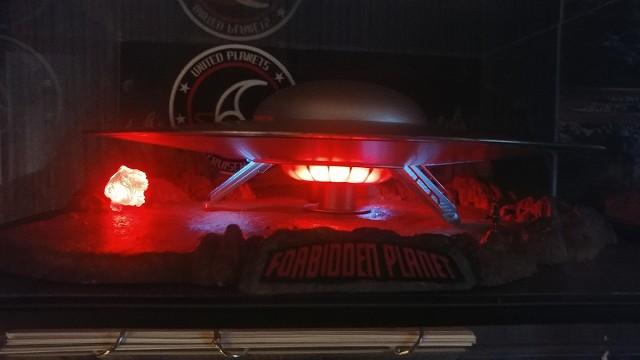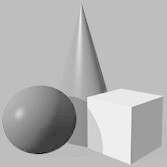The 1956 Sci-Fi Classic, "Forbidden Planet" was one of the biggest and most expensive movies of its kind ever filmed, and was one of MGM's largest efforts in science fiction at the time.
Its effect on writers of movies and television of the future was profound, as even Gene Roddenberry, creator of Star Trek would sat that the movie was, for him, a foundation from which the entire concept of Star Trek evolved.
Polar Lights created two differnt kits of the C57D "Space Cruiser" from the movie.
One was in 1/72 scale and was 24 inches in diameter (!). The size allowed for incredible detail to be paid to the interior of the ship and included the provision of crew figures, a Robbie the Robot figure, figures of Dr. Morbius and daughter Altaira and even a clear plastic figure of the "Id Monster."But at 2 feet in diameter, the model "commands" a large display area!
The other Polar Lights version is 1/144 scale, which makes it 12" in diameter - a much more "liveable" size. The exterior is the same quality of molding as the larger version. The model simply does not have the ability to support substantial interior detailing.
The majority color we chose for the C57D was Metallic Silver, which initially had a strong metallic "graininess" after application. While it was pretty, it seemed a bit coarse for the overall look of the ship. Luckily, after applying a satin-finish clear-coat, the overall look smoothed out and seems far more accurate.
The instructions called for a slightly darker silver color to be used around the edge ring of the saucer-like hull. Instead, we chose to mask off the edge ring from the bulk of the upper hull and first lay down a gloss black surface, followed by an airbrushed application of Alclad II Chrome, which was clear-coated with Alclad Aqua Clear after complete curing.
I think the results speak for themselves.
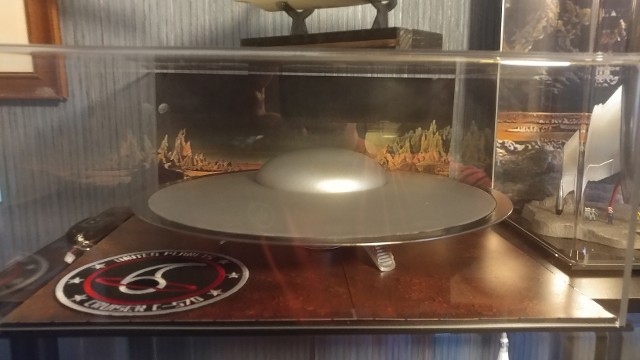
During construction, we decided to add LED illumination to the model. Through eBay, we found a reasonably priced LED solution sold by a German modeler, known as "lighingkit." The package provides a ring, multi-colored LED array for the engine area, three flickering blue LEDs for the gangways and a voltage regulator board to control the voltage provided to the the LED sequencer board. The sequencer has three push-buttons, to control lighting mode and effect speed. The controls are accessible by removing the upper dome. There is also provision there to install a 9V battery, for operation off the display base and its AC adapter-provided power.
After assembly and finishing was completed, we acquired a display case for the model, with a 14" by 14" surface area. Using the box art from the model, I made a "ground cover," using the depiction of the soil as the reference, and also printed out a copy of the Altair 4 landing site "matt paintings," as seen on the movie. This would be placed on the inside of the clear case cover, behind the ship.
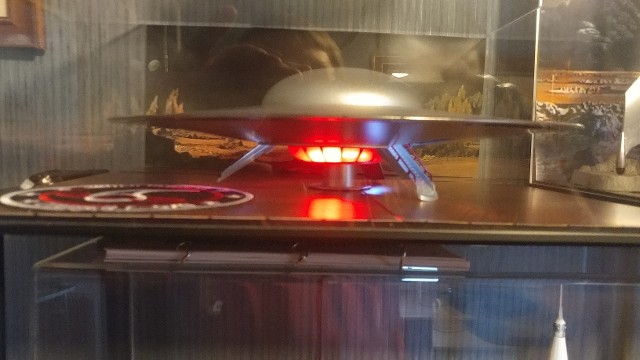
After getting these surfaces lined up, I also found a resin display base for the 1/144 C57D made by "Red Planet Models" and sold by CultTVMan.com in Georgia. The kit provided a cast resin base, two small "mountain ranges" to ad behind the base, a scaled metal figure of Robbie the Robot, and a clear, red resin figure of the Id Monster. Well, sign me up!
We used a combination of Desert Bisque textured paint as a base coat, then added airbrushed shades of Red Brown acrylic over the base to get the soil shading to match the box art prints. The mountains were done in airbrushed Medium Gray, Smoke, and German Gray shades.
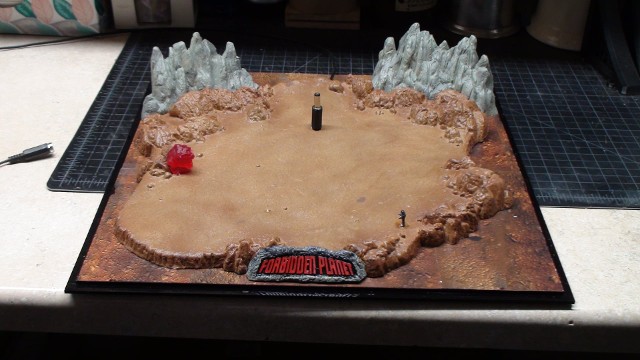
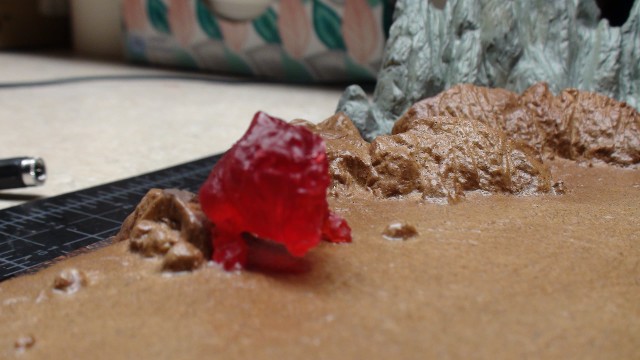
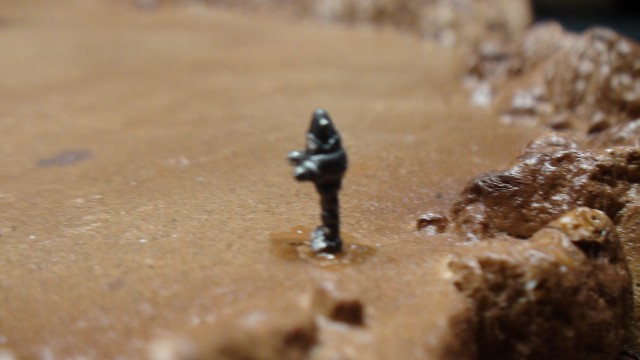
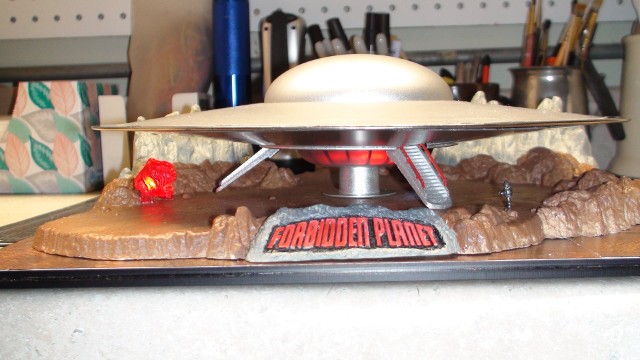
We decided to use a 3 mm flickering red LED to illuminate the Id Monster, so a cylindrical hole was made in the monster's "bottom" where the LED would be inserted and cemented. The wiring was taken through a small hole drilled into the base and run through wiring channels, routed out of the bottom of the base with a Dremel Tool. This also provided a better solution to the ship power connection, as the power connector could be mounted into a hole drilled into the base and the model could just be placed onto it to make connection.
